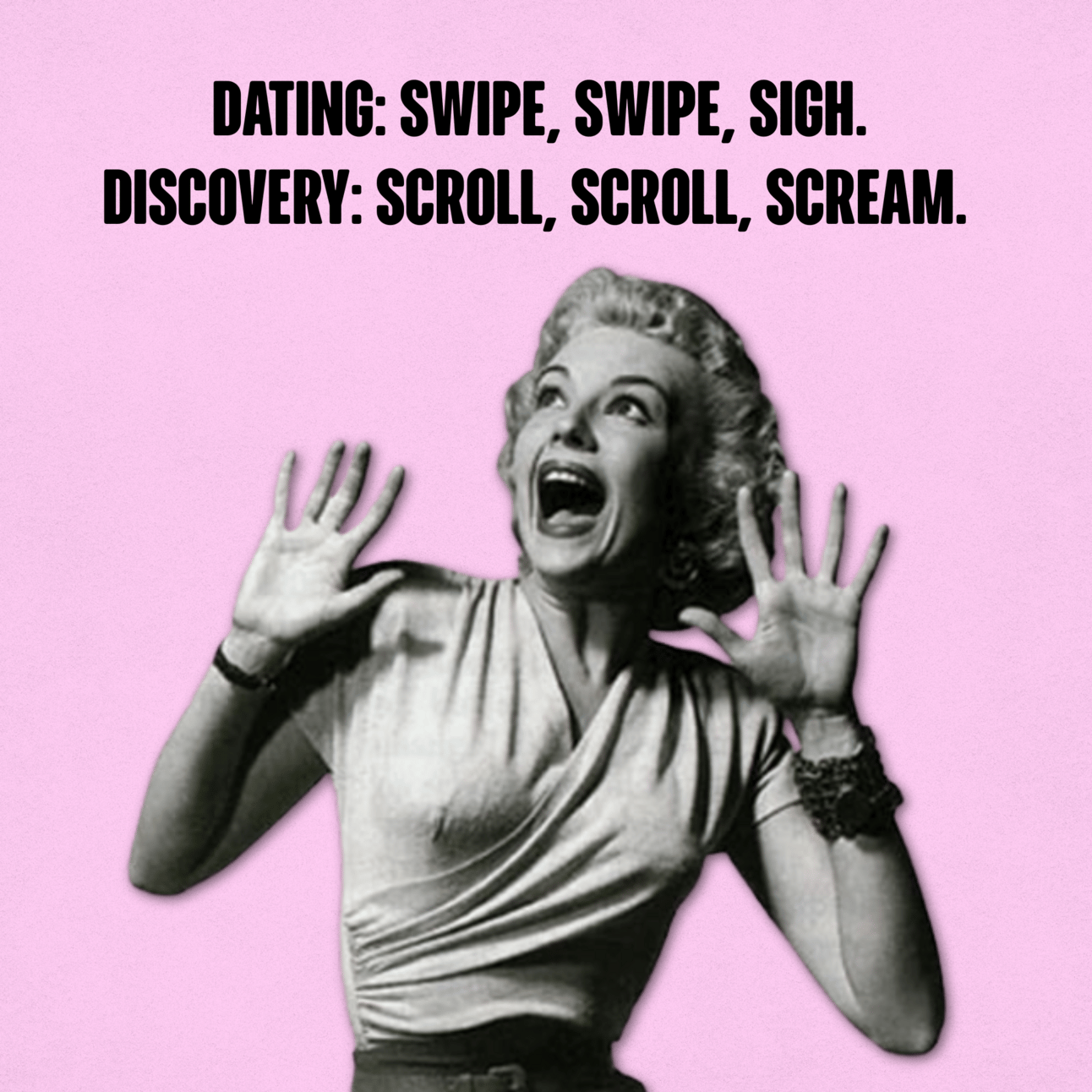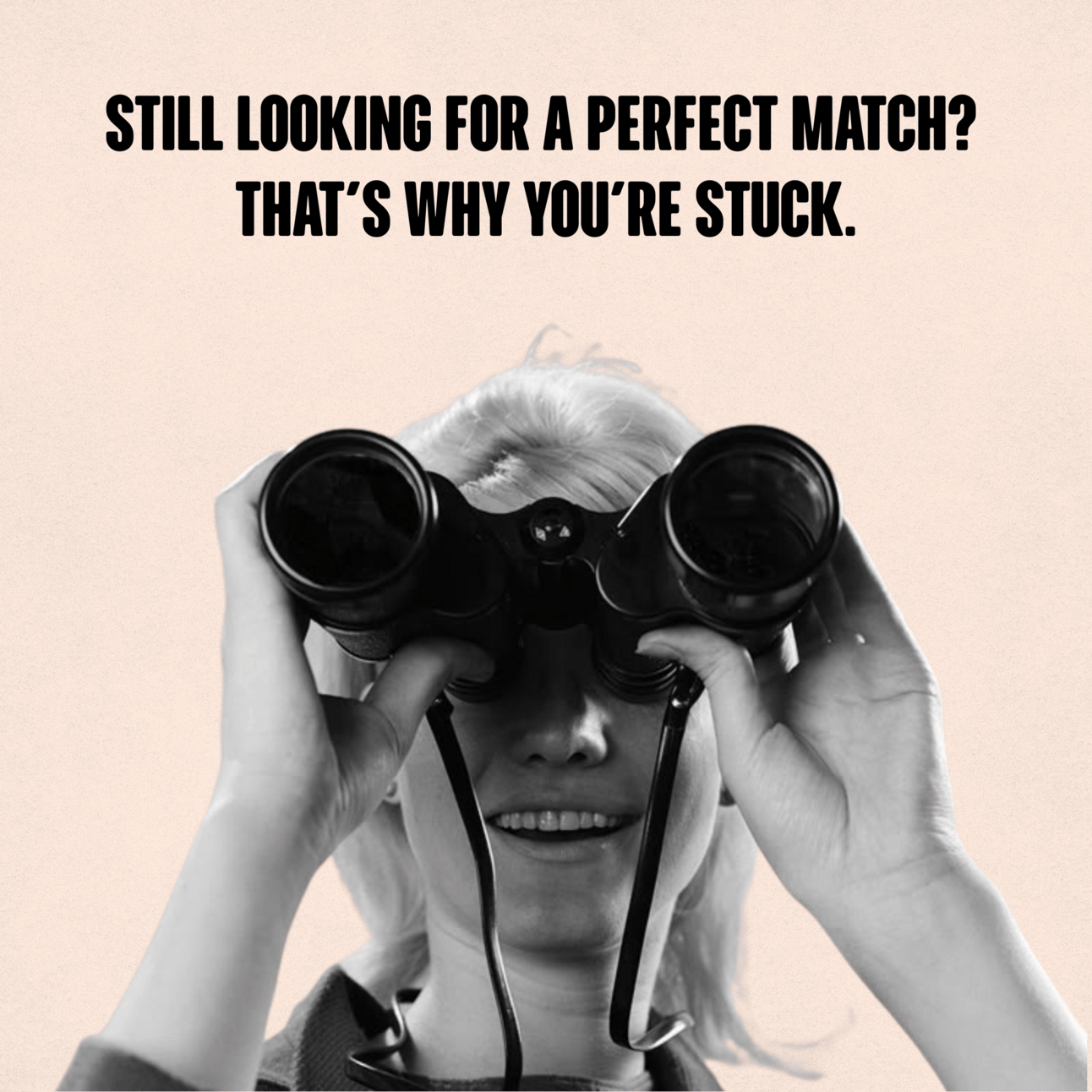- Return on Influence
- Posts
- The quiet mistakes making discovery feel impossible
The quiet mistakes making discovery feel impossible
If you keep seeing the same creators, the problem isn’t the talent — it’s the rules you’re following.
Welcome to Return on Influence #55! The weekly newsletter where I, Eleni Zoe from Modash, share tactics and ideas to strengthen your influencer campaigns and improve ROI.
New here? Subscribe in one click with this magic link
On paper, my last date was perfect. Interesting job. Good pictures. Great dog. He checked all the boxes on my silly mental checklist.
But in person? Flat. No spark. Nothing in common. I walked home alone, trying to remember why I’d swiped right in the first place.
When I was younger, I’d meet someone at a party, talk for hours, and somehow end up in a three-month relationship because they made me laugh once, and we both liked avocados an unhealthy amount.
Today, dating is a checklist. Must be over 6 feet, must love travel, must earn X, must want kids, must not want kids, must text back within 30 minutes.
You swipe. And swipe. And swipe. And somehow, it’s always the same people.

From what marketers tell me, that’s exactly what influencer discovery feels like, too.
That feeling, of scrolling endlessly and seeing the same people, comes from how you’re approaching discovery, not from a shallow pool.
Here are the three quiet mistakes that keep you stuck.
Quiet mistake #1: You're filtering yourself into a corner
Tell me if this sounds familiar. You open your influencer marketing tool, your spreadsheet, or Instagram and TikTok.
Your list is reasonable:
In our niche
4%+ engagement
located in our main market
Already posts about our category
aesthetic matches the brand
no weird past collabs
no weird comment sections
You scroll. You click. You tweak a keyword. You open another 15 profiles. You stalk a tagged creator’s followers. You try hashtags. Again. There’s no one else. The same faces keep popping up.
We see this happen at Modash every day. Imagine you’re a brand selling lamps. The instinct is to find lamp influencers. Not only that, you also want 120 of them in Berlin with at least 50K followers, a 4% engagement rate, and they have to answer to the nickname “Chicken nugget”.
The search gets so precise, so narrow, and so perfect on paper… that this hypothetical lamp brand discovers no one.
This isn’t because there’s a shortage of talent.
It’s because you’re overfitting.
Overfitting is a concept in math that means you’re interpreting data too literally to be able to account for outliers or predict the future.
If my mere mention of math gave you a jumpscare, don’t worry. In our context, it just means your influencer criteria are too strict. And often, it’s the wrong criteria, too.
Quiet mistake #2: You believe in the perfect match
On paper, a perfect match feels safe.
When a creator already talks about your category and the metrics check out, it’s easy to assume it’ll work. The content will perform. The partnership will be smooth.

But let’s be honest. My silly mental dating checklist doesn’t weed out the undesirables. It’s just an attempt to keep my heart safe.
Same thing here. Your criteria aren’t just a list. They’re a cage. Every line — “must have 4% engagement,” “must post in our niche,” “must match brand aesthetic” — protects you from risk, criticism, and uncertainty.
But that sense of safety is costing you growth over time.
In a recent survey, marketers told us the same thing:
“We’ve worked with everyone relevant.”
“Every search gives us the same results.”
“We’re getting creators who look great but don’t convert.”
That’s the result of overfitting in action.
Overfitting starts from a smart place. When you're first building a program, you want to find The Obvious CreatorsTM. People who are already posting content about your product type or category. That instinct makes sense.
But pretty soon, you hit a wall.
Instead of discovering, you’re just eliminating.
You’re following your own rules too closely. Must be in our niche. Must have X metrics. Must post in Y style. And before you know it, there’s no one left. (If you’re already in an uncommon category, you’ll reach this place sooner.)
This isn’t just a “the pool is small” problem. It’s a creative and commercial bottleneck.
When you overfit your criteria, you get:
Higher fees - popular creators charge more
Repetitive content - same styles, same formats, same language
Saturated audiences - your competitors already got there, the audience is over it
Slower growth - less net-new reach
Flatter performance - no emotional hooks, no fresh POV
Quiet mistake #3: You’re waiting for misfits instead of seeking them
Nearly 3 in 4 marketers told us they’ve worked with a creator who didn’t “fit” and overperformed.
They broke one of their own rules. The creator didn’t have the perfect aesthetic. They were the wrong age entirely. They weren’t even in the right category.
But something about their storytelling, their timing, or the way their audience trusts them worked.
So why don’t more marketers go looking for those creators on purpose? Why is it more common to wait for these misfits to accidentally fall into your lap, or your FYP?
As I see it, influencer marketers don’t have a clear framework to find these misfits. So they rely on the safe checklist that’s relatively easy to implement.
But spreadsheets still multiply, emails go unanswered, and you still hit walls. Everything still feels hard.
If you don’t systematize how you identify the creators you want to work with, the result is always the same: sooner or later, you’ll feel like you’ve reached a dead-end in discovery.
The goal isn’t to throw out your criteria. It’s to change them.
Because the real question isn’t “Who already matches our brand?”
It’s “Who can tell our story in a way that is authentic to them?”
This mindset shift applies no matter how you run discovery, whether you’re building lists in Modash, using agencies, or deep-diving through niche hashtags and tagged reels at midnight.
Next time, I’ll share the storyfit framework — so you can stop overfitting and start finding creators who bring new angles, fresh audiences, and real growth.
Until then, loosen one of your rules. And see who you find.
Handpicked job openings

Olipop is looking for an Influencer Coordinator. The role is remote in the U.S.A.
Everyday Dose is looking for an Influencer Coordinator. The role is remote in the U.S.A.
Brooklinen is looking for an Influencer Marketing Manager in New York, U.S.A.
Wild is looking for a Senior Influencer Marketing Manager in London, UK.
Healf is looking for an Influencer and Partnerships Manager in London, UK.
📌A NOTE ABOUT WHAT YOU JUST READ
The tips in this newsletter might not be right for your specific case. Use good judgment when deciding whether to take advice from the internet—even mine. My team and I survey & interview influencer marketers whose advice and observations come from their direct experience. ROI is meant for you to connect the dots and be inspired or challenged to think about your influencer marketing in a way you haven’t before.